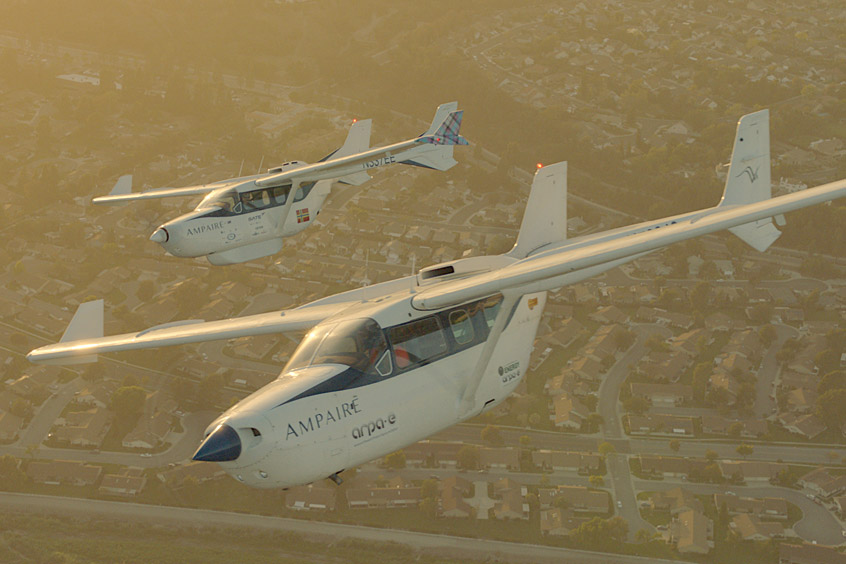ACE 2026 - The home of global charter.
 The bimonthly news publication for aviation professionals.
The bimonthly news publication for aviation professionals.

Ampaire, a leader in electric aviation, has won a $150,000 Phase 1 award from NASA under its Small Business Innovative Research (SBIR) programme. The award is for the High Efficiency Powertrain for Hybrid Aircraft (HEPHA) project.
The Phase 1 award will fund sizing, architecture and other analytical studies over six months as a prelude to a potential Phase 2 award that would fund the system's installation and testing on Ampaire's Cessna Skymaster testbed aircraft, the ARPA-E Bird. This aircraft has also been used for previous research by the Department of Energy's ARPA-E advanced programmes unit. It will play a role in a $9 million ARPA-E SCALEUP award to mature individual systems that will eventually be certified on Ampaire's nine passenger, hybrid-electric Eco Caravan.
“These wins from NASA and the DOE recognise Ampaire's leadership in electrified aviation. They also recognise the near term potential to field hybrid-electric aircraft that will revolutionise aviation by lowering emissions and the cost of travel,” says CEO Kevin Noertker. He cited a series of recent Ampaire accomplishments: the first flight of the world's largest hybrid-electric plane, the nine passenger Eco Caravan on 18 November, 2022; a global MRO support agreement with Air France Industries KLM Engineering & Maintenance; and an order for 50 Eco Caravan aircraft from lessor and financier Monte.
Under the new NASA SBIR programme, the ARPA-E Bird would be equipped with a hybrid propulsion drivetrain in the nose and an electric drive system in the rear for a multi-mode hybrid system. Ultimately, the system could be certified for light aircraft or used as part of larger power systems on regional aircraft and even transport category single-aisle jets.
The new AMP Drive AMP-H270 powertrain is a 270 kW system that has about half the power output of the AMP-H570 system that powers the Eco Caravan. The new drive system combines an ultra-efficient DHK180A4 compression ignition engine from Wisconsin-based DeltaHawk Engines with an integrated electrical drive designed by Ampaire. The DeltaHawk engine runs on Jet-A and compatible sustainable aviation fuels. The Ampaire solution for the testbed aircraft provides a 45 per cent cruise efficiency gain over the conventional combustion engines it replaces and double the efficiency of comparable gas turbines.
The NASA SBIR programme will aid Ampaire in continuing to develop intellectual property on new hybrid configurations. It also positions the company's AMP Drive technology to participate in future development programmes such as NASA's SUSAN programme, the Subsonic Single Aft Engine Aircraft, and Ampaire's commercial transport class product roadmap. The proposed commercial transport size aircraft for the SUSAN programme would rely on a combustion powerplant in the tail with distributed electric propulsion along the wings.